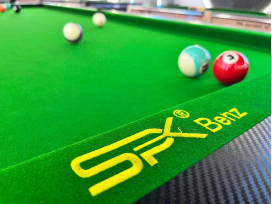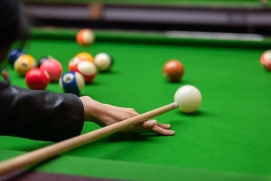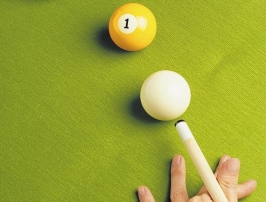In the sport of billiards, sticking the ball often makes players feel tricky, handling a little careless, you may miss the opportunity to score, and even give the opponent to leave the perfect attack situation. However, by mastering some practical skills, you can skillfully deal with the sticking ball and turn the danger into a happy ending. Next, let Spike take you to understand about how to release the ball from a banked ball!

The first step is to observe the ball carefully. Standing at different angles, comprehensively examine the positional relationship between the mother ball and the target ball, including the angle formed by them and the edge of the bank, the distance from the pocket, etc. At the same time, pay attention to the elasticity of the bank. At the same time, pay attention to the elasticity of the edge of the pool, there are differences in the elasticity of the edge of the pool of different tables, which will have a direct impact on the striking effect. Spike pool table using imported high elasticity rubber edge, rebound effect is good, the ball alignment does not change line. A clear understanding of these conditions, in order to develop a reasonable strategy for the next shot.

The choice of hitting point is crucial. Generally speaking, if you want to let the target ball rolling along the edge of the library straight into the bag, can be selected to hit the target ball near the library side of the lower part of the middle, so that the target ball in the forward momentum at the same time, produce a certain downward spin, reduce the friction with the edge of the library, smooth slide to the pocket. For example, in American billiards, when the target ball is close to the edge of the bank, and the pocket is on its extension line, this choice of hitting point is more applicable. If you need to let the target ball bounce off the edge of the bank and then change direction into the pocket, you have to adjust the point of impact according to the relative position of the target ball and the pocket. For example, if the target ball is at a certain angle to the pocket, and you want it to hit the edge of the pocket and then fold into the pocket, the point of impact can be appropriately skewed to the side of the target ball away from the pocket, and through the control of the impact strength and rotation, the target ball will accurately hit the edge of the pocket rebound point, and then fall into the pocket smoothly.

The way of hitting the ball is also delicate. For the banked ball, it is often more appropriate to hit the ball gently. Stronger strokes may cause the target ball to hit the edge of the bank too much, resulting in an uncontrollable bounce. Using the small arm to deliver the power in a smooth and even manner, you can control the power of the ball accurately. At the same time, the proper use of spin allows for better control of both the ball and the target ball. For example, adding appropriate side spin to the mother ball can change the trajectory of the target ball when hitting the target ball and increase the success rate of scoring. When the mother ball and the target ball are in close proximity and at a certain angle, the side spin can help the mother ball avoid the interference of other balls and hit the target ball accurately, so that the target ball will move according to the expected route.
The mental state is also critical when playing the ball close to the bank. Don’t get nervous because the ball is close to the edge of the bank, which will affect your technical performance. Stay calm and focused, trust your judgment and technique, and hit the ball according to the established strategy. Do more special training on the banked balls in your daily practice to accumulate experience and gradually improve your ability to handle these balls. The next time you encounter a banked ball, you will be able to handle it with confidence and ease, improving your success rate and enjoying the fun of billiards.
Translated with DeepL.com (free version)
